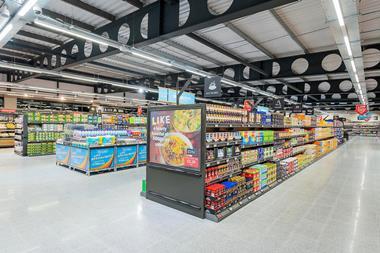The hard discounters have received much coverage following revelation of Aldi’s substantial UK loss in 2009, as signalling the sudden reversal of rapid growth in the recession.
RWKB’s recently-updated profile of Aldi puts these developments in their wider context, demonstrating that in market share terms there have been only fractions of percentage point changes, while behind this lies collective longer-term failure to achieve breakthrough.
The hard discounters did increase share early in the recession, but only marginally. According to TNS/Kantar figures, Aldi’s share rose from 2.6% in early-2008 to 2.9% in mid-year - still pre-banking crisis - but to 3.2% by year end, early in the recession. However, this momentum faltered in early 2009, at a 2.9% share in Aldi’s case, despite the recession then taking hold, before subsequently levelling off at about the early-recession peak: for Aldi this is a 3.0% or so share. Lidl’s pattern has been similar. These movements are small fractions of single percentage point shifts in market share in recession and follow bursts of new openings with little evidence of much growth, let alone direct relation to recession.
Moreover, in the long-term context the hard discounters had already failed to build major UK market share, not least because of the depth of entrenchment of the majors when they arrived in the early 1990s. This is coupled with the deep-rooted habit of the UK consumer for the one-stop superstore shop. Their market share advance has only been in line with expanding store networks while, crucially, sales densities have stalled.
Therefore, the hard discounters have arguably only achieved the demise of Kwik Save, and are now matching its peak 1990s share. That is not to say a renewed opening programme by Aldi will not result in its market share edging upwards. However, a longer-term breakthrough will only be signalled by dramatic improvement in Aldi’s (and, Lidl’s) sales densities and like-for-like sales, sustained over an extended period.




























No comments yet